Tripatini
the world's smartest travel social network
Easy Thailand Travel: Chiang Mai
Chiang Mai, Thailand, is known for its elephants, tigers, resorts, parasols, temples, hill tribes and mountains.
So what's in it for Levelers? All of the above and more.
Old city gates
Start with Chiang Mai which means "new city" despite its being 700 years old. Once capital of the Lanna ("a million rice fields") Kingdom and center of Buddhism in northern Thailand it is now the country's second largest. For many years it was accessible only by river or elephant. A railway line wasn't finished until the late 1920's.
Tip: Arriving by plane today is a breeze. Although you will have to walk down the stairway and across the tarmac, the airport is blissfully small and no long hikes are required to get from the plane to your luggage to a car and driver.
A short drive gets you to the heart of Chiang Mai. The city is in a river valley and thus flat, though ground and pavement are often uneven. Stop before you gawk.
English is not as prevalent as in Bangkok but you won't have much trouble getting around. Most visitors come via tours or book them once they arrive and prices are reasonable.
Shangri-La
Hotels in Chiang Mai
RarinJinda Wellness Spa & Resort
Four Seasons
They range from small, no stars but clean to elegant, architecturally dramatic resorts. I stayed at the beautiful Shangri-La, which is in the heart of the city with an ATM across the street and the popular night market three blocks away. Also downtown is the RarinJinda Wellness Spa Resort with a delightful wellness spa and elevators to facilitate going from one floor to another.
Warning: The Ratilanna Hotel has a lovely spot on the river as well as a spa and a huge pool but I can't recommend it to Levelers because of the many sets of stairs. Also afflicted with stairs is the Four Seasons Resort outside of Chiang Mai but the ambiance and the cooking school are worth the effort (20 steps to the stairs).
Wherever you stay, there are a variety of fascinating and nearby side trips to take.
Temples and monks
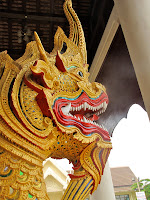 Don't miss the main temples, most within easy and flat walking distance from the market (which you also do not want to miss; very photogenic)).
Don't miss the main temples, most within easy and flat walking distance from the market (which you also do not want to miss; very photogenic)).
It's easy to appreciate the devotion to detail in these interesting structures and to photograph it because they are blissfully free of
tourist throngs.
After you have toured the most interesting temples - and there are many - find out what a Buddhist monk's life is like and why it's chosen at the Lanna Campus of Mahamakut Buddhist University.
The innovative program Monk Chat allows visitors to meet young monks and learn about their religion and practices while giving the young men an opportunity to practice and improve their English.
I spent about 20 minutes talking to Psra Sam, a young novice, about his background and activities, a very interesting experience.
Warning: Novices and monks are not allowed to be touched by any female so be careful. No hugs or handshakes from normally demonstrative Americans please.
Pachyderm love
I dare you to visit The National Thai Elephant Conservation Center and not fall in love with these remarkable beings. I say beings because their actions and emotions so often mirror our own.
Take a ride, watch them swim and play in the lake, paint pictures that you can purchase, show off their logging skills and see how elephant poo
paper is made. No joke. It's neat - and sanitary - stuff!
Tip: There are several opportunities in the Chiang Mai area to get up close and personal with elephants, but I recommend this one. It is less
touristy, your money goes to support responsible practices and the
experience is far superior to the tourist traps most tours favor.
Parasols and tigers
Photographers will have a field day Bor Sang, known to all as Parasol Village, because that's the major product. Either as a cottage industry supplying the basic structures or in a
"factory," where the finished products are created in an assembly line or sorts, the colorful images are addictive to picture takers.
Who knew how complex these familiar objects could be?
Then we lunched at Tiger Kingdom where visitors can pet tigers and have fish eat their feet.
No joke. We drive in, walk up some stairs to the main building and its restaurant and there are enclosures separated by electrified wires.
Inside are tigers - sleeping, wading in a pool, using a huge tree trunk as a scratching post - and people, tourists posing with the tigers and photographers taking their pictures.
Does the phrase Siegfried and Roy come to your mind? It did to mine. I know big cats, like a lot of smaller ones, sleep about 18 hours a day and when well fed don't bother to hunt, but I had to wonder what kind of
lotus blossoms these felines were fed.
There's a sliding scale of cost - about $10 to go inside with the tigers for 15 minutes to about $28 to have a professional photographer take 50-100 shots to record your interactions with the beasts and download them to a CD - if you're interested.
Then there are the flesh-eating fish. Fish "spas" are the big thing in Chiang Mai these days. You sit on a bench and put your feet into tanks of the garra species of what look like minnows that procede to nibble away the dead skin and, according to the hype, rejuvenate the skin and make healthier, happier feet. This costs about $5.
My pals and I resisted temptation but one colleague tried it later at the night market and said it was great.
Good for him. I couldn't keep Siegfried and Roy from flashing through my consciousness.
Videos
Groups
-
India
173 members
-
Tour Operators
873 members
-
Ireland
93 members
-
South Dakota
17 members
-
Azerbaijan
17 members
-
Shopping the World
55 members
-
Tech for Travel/Hospital…
87 members
-
Andorra
26 members
-
Online Corner
75 members
-
Minnesota
22 members
-
Backpackers & Hostels
84 members
-
Portugal
60 members
-
Turks and Caicos
26 members
-
Agritourism/Farmstays
72 members
-
Zambia
21 members
© 2025 Created by EnLinea Media.
Powered by
![]()
Badges | Report an Issue | Privacy Policy | Terms of Service
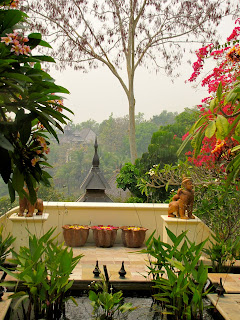
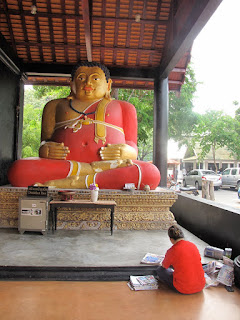
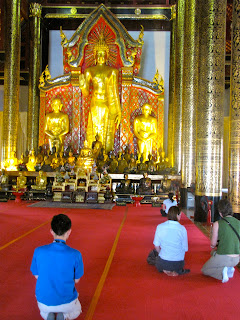
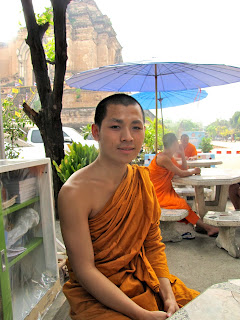
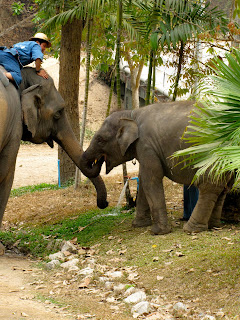
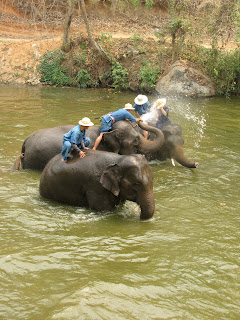


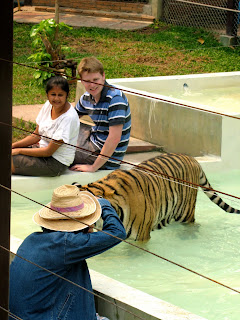
You need to be a member of Tripatini to add comments!
Join Tripatini